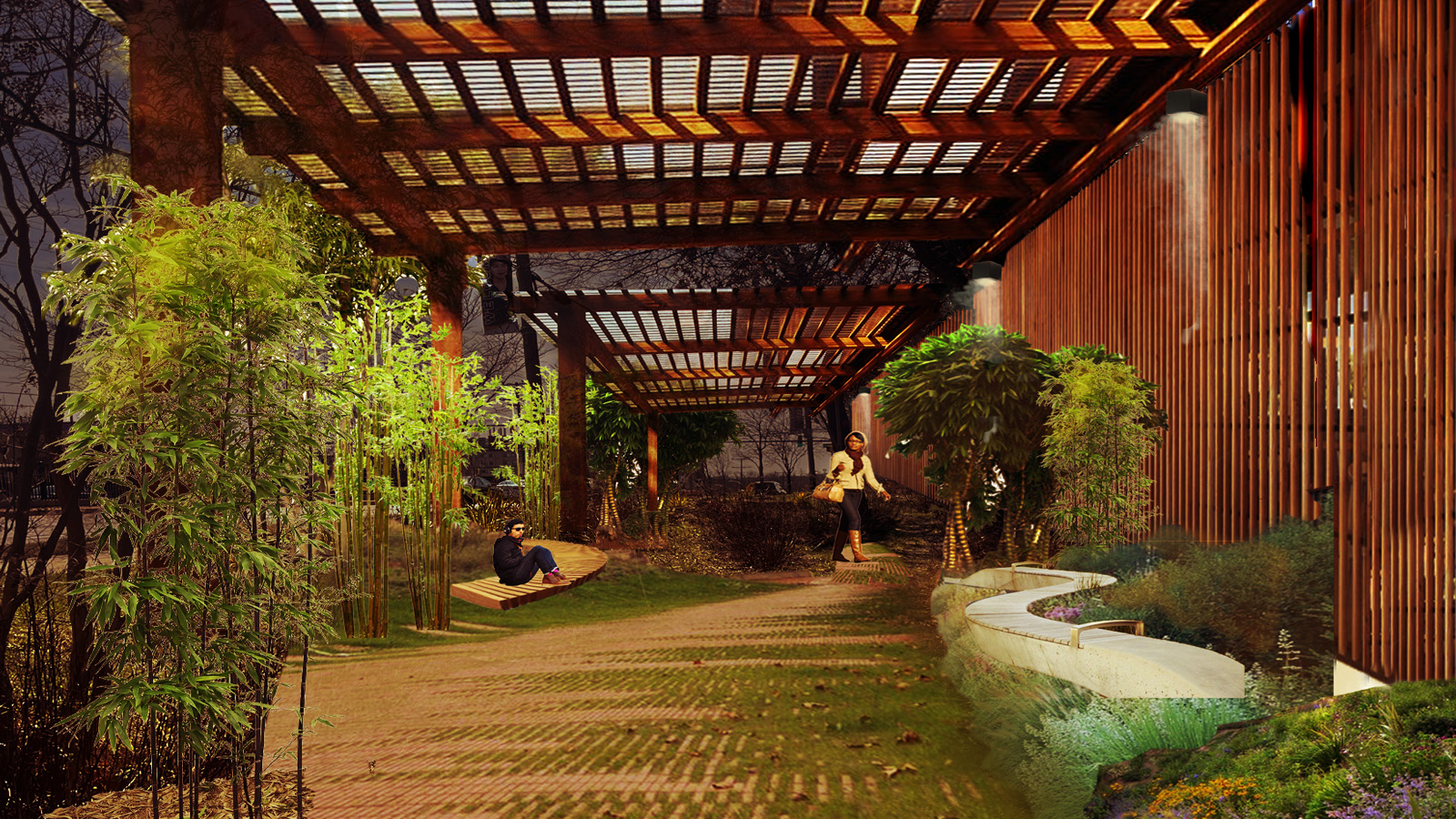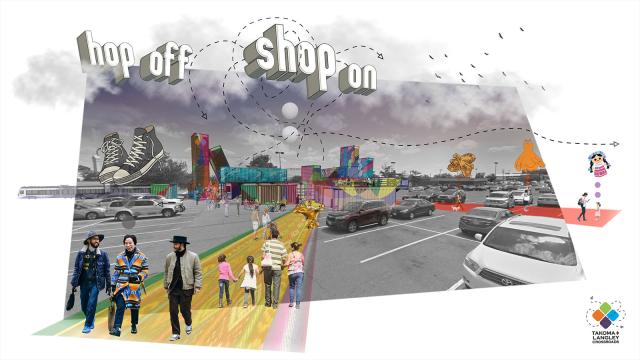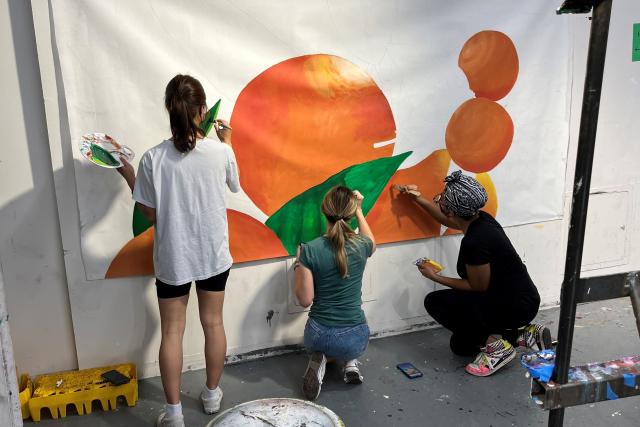Making ‘Place’ Through Art and Design
April 29, 2022

In a new creative placemaking minor, students partner with communities to envision public spaces.
By Maggie Haslam
A long stretch of sidewalk along New Hampshire Avenue offers a straight shot from Langley Park to Takoma Park. While overgrown and noisy, University of Maryland students and faculty are working with community partners to see its potential as a place, not just a pass-through: a lush, trellis-covered boulevard leading visitors from the future Purple Line stop to neighborhood businesses.
It's an example of the real-world projects students will pursue as part of a new minor in creative placemaking debuting this fall that will use art, culture and design to spark conversations about a community's future.
Students will employ techniques like mural design, storytelling, pop-up installations, public events and performance to advance a community’s vision and nurture vibrant, socially responsive and just places. The minor is a collaboration between the School of Architecture, Planning and Preservation and the College of Arts and Humanities. It is part of the University of Maryland Arts for All initiative, which leverages the combined power of the arts, technology and social justice.
“This minor brings together the university and diverse communities for important conversations about local issues and shows the power of using creativity and artistic expression to spark positive change,” said Arts for All Director Patrick Warfield. “It truly embodies our vision for Arts for All.”
Coined by the National Endowment for the Arts in 2010, “creative placemaking” is the collaboration of artists and designers with local residents and stakeholders to address community challenges and opportunities. Navigating the process with students allows them to practice the essential relationship-building, dialogue and collaborative decision-making involved in addressing a community’s needs and aspirations, said Professor of Architecture Ronit Eisenbach.
“We want our students to engage in a spatial practice that sparks inquiry and fosters relationships in place,” said Eisenbach, who will serve as the program’s director. “This program will help students leverage and expand skills beyond their discipline to build on and strengthen the assets our local communities already have in meaningful ways.”
The minor is rooted in over 20 years of community work by Eisenbach and university and professional colleagues. In 2018, she launched a joint public impact design studio and creative placemaking seminar to bring together undergraduate students and faculty with area professionals and neighborhood stakeholders on collaborative, community projects.
The minor will initially offer two concentrations—spatial design and visual arts—geared to undergraduates studying architecture and studio art, with plans to expand to students in programs such as performance art, art history, creative writing and landscape architecture. Students will work in the studio and in diverse, local communities—including those that stand to be impacted by the construction of Maryland’s Purple Line, like Riverdale, Takoma Park, Langley Park and Lakeland—to advance community goals, protect and celebrate identity and spur equitable economic development.
Assistant Professor of Art Brandon Donahue, who will lead the studio art concentration, said he is excited for students to see how their skills can contribute beyond the classroom to affirming a sense of place and community.
“Art no longer stays neatly into the gallery and architects don’t only design buildings,” he said. “We both see space for what is there, what is not there and what could be. Through public collaboration, artists and designers can act as civic and cultural leaders.”
Eisenbach and Donahue plan to further strengthen relationships developed over many years between the university and community members. For instance, a mural concept for Riverdale’s Sarvis Cafe, developed last year by Eisenbach’s placemaking studio and area community stakeholders, will become a reality this fall through Donahue’s art studio, the latest project to emerge from a multi-year university-community partnership in Riverdale.
“The students’ creativity has helped us to think out of the box and figure out what works best for the community,” said Patricia Parker, the executive director of the Central Kenilworth Avenue Revitalization Group, who is leading community-university efforts in Riverdale. “I think these types of projects not only expose students to working with diverse and unique communities, but they also help them think about what’s buildable and what will work.”
Learn more about the new minor in creative placemaking.
Main image: Students and faculty, in collaboration with the Takoma/Langley Crossroads Commercial Development Corporation, are developing concepts this spring to support area businesses and attract young entrepreneurs in advance of the construction of the Purple Line. First rendering by Ioie Rogers-Archer ‘22. Second rendering by Mark Davis ‘22.
Third image: Three students from Brandon Donahue's spring painting class work together on polytab sections of a larger mural collaboration for TheHallCP. Photo by Brandon Donahue.



